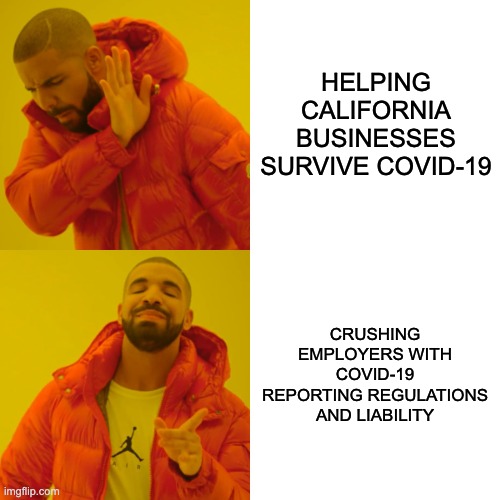Up to date on SB1159? Now learn about AB685
Ok, dear readers – it is Friday. But, it’s not just any Friday. If Friday the 13th would be an entire year, that year would be 2020. And what happens when it’s Friday the 13th in the year of Friday the 13th? Well, probably not much good. Recently, I read that a nest of some 200 murder hornet queens was wiped out “just in time” which means the murder hornets are still a risk. In other words, 2021 can’t come soon enough.
That being said, it’s still Friday, and what a week it has been – not a single text message from a supposed UBER driver telling me how much she wants Proposition 22 to pass, not a single message from someone demanding urgent action on California’s dialysis clinics. Oh, what a time to be alive! We must, after all, find our silver linings where we can.
So now that the prospects of voting and electioneering and all that is long behind us, let us refocus our interests on the matters at hand: SB1159 continues to make employers and insurers nervous with its poorly worded and clumsily mapped out effects. But as much attention as SB1159 is getting from bloggers, journalists, presenters, etc., and as much as all that attention is justified, there is another bill that I have noticed has not gotten as much attention as SB1159.
That is, of course AB685. Passed alongside SB1159, but not deemed “emergency” legislation, it takes effect about the same time that we are all sobering up from celebrating the end of the worst year in living memory: that’s right, January 1, 2021!
AB685 primarily has to do with the obligation of the employer to report possible COVID19 exposure. Labor Code section 6409.6 is amended to trigger duties on the part of employers when “the employer receives a notice of potential exposure to COVID-19.” These duties include:
- Providing written notice to all employees, or their representatives, and the employers of subcontracted employees, “who were on the premises at the same worksite as the qualifying individual within the infectious period” about potential exposure. The method of notice is to be “in a manner the employer normally uses to communicate employment-related information” such as snail-mail, e-mail, and text-message. The notice must also be in English and “the language understood by the majority of the employees.”
- Provide all employees (and their representatives) who “may have been exposed” with information related to COVID-19 related benefits, whether federal, state, or local, including but not limited to workers’ compensation, etc.
- Notify all employees and employers of subcontracted employees of the disinfection and safety plan to be implemented
- Notify the local public health agency if the number of COVID-19 cases at the worksite reach the level of “outbreak”
- Keep Cal/OSHA Form 300 injury and illness log (or at least the same information as on that form) for purposes of reporting potential infection to the representatives of employees.
AB685 also prohibits retaliation against an employee for disclosing a COVID19 diagnosis and require the keeping of these reporting records for at least 3 years.

There is more to AB685 which covers enforcement, “serious violations” and the ability of the employer to dispute or disprove that a “serious violation” occurred, but that sounds like fair game for another blog post.
In the meantime, as the new year races towards us with breakneck speed, what are the employers supposed to do to get ready for this? After all, I’d be willing to bet a considerable amount of my lunch money that the clock striking midnight on December 31, 2020 will not be the cure to COVID we’ve all been waiting for.
Employers would be wise to prepare notices and to poll their employees on the both the preferred language and the most effective means of communicating these notices to them. January 1, 2021 will be too late to start figuring this out, as a potential exposure might occur on January 2, 2021.
Additionally, if there are any subcontracted employers on the premises (such as, for example, security services or operators of a café in the building) it is important to identify the contact person for each of those subcontracted employers to include in a potential exposure notice.
Finally, insured employers should absolutely be asking their brokers and insurers for a specific plan to follow in reporting potential exposure, which should align as much as possible with the reporting requirements outlined in SB1159.
Have a good weekend folks!